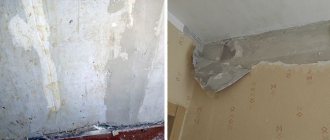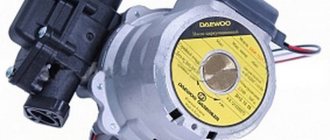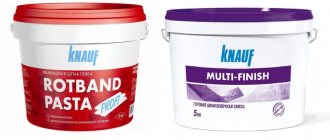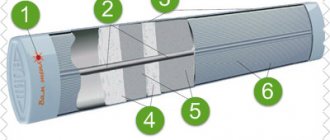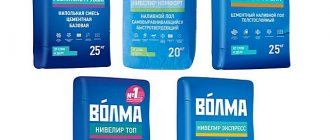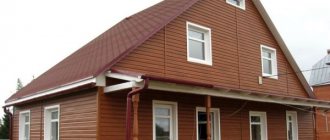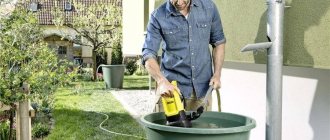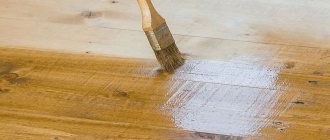Finishing work, including preparing surfaces and even giving their relief unusual shapes, cannot do without putty. The market is rich in choice, but many consumers are attracted to Knauf putty. The company offers a wide range of putty materials from powder mixtures to ready-made emulsions. Let's look at the most popular varieties. It is worth noting that all putty mixtures from this manufacturer contain adhesive ingredients.
Area of use
By leveling the surface with putty, you get bases that are resistant to negative factors and humidity, so these mixtures are quite often used for finishing bathrooms and kitchens. Using putty, you can eliminate defects in ceilings and walls, reducing the consumption of decorative materials. Among others, the finishing putty “Knauf” is presented on the building materials market, which will be discussed below.
Technical characteristics of Knauf HP Finish
This gypsum putty for finishing interior work is sold in packages of 25 kg. The composition is applied to the starting layer. Its consumption is 2 kg per square meter, which is true if the layer thickness is 2 mm. Among the main properties it is worth highlighting:
- moisture resistance;
- efficiency;
- environmental friendliness;
- ability to regulate indoor humidity
If the layer thickness is 1 mm, then each square meter of surface will need 0.9 kg. After reviewing the technical characteristics of the Knauf finishing putty, you can find out that the composition contains polymer additives and gypsum. For 25 kg of dry mixture you will need approximately 13.75 liters of water. This volume can be increased to 16.25 liters.
Which putty to choose
Puttying surfaces is one of the stages in completing repair work. It provides an even, smooth base for wallpapering, painting and other decorative coatings.
There are many types of putties, in the form of dry mixtures and ready-made pastes.
We will try in this article which putty to choose from the variety presented in construction stores.
Figure 1. Puttying walls.
TOP 3 best products according to customers
Purpose Weatherproof putty is used for facade work, as well as for leveling.
Paste-like vinyl putty, completely ready for fine leveling of substrates. Easy n.
FIELD OF APPLICATION: 1. For sealing joints of plasterboard and gypsum fiber sheets with thinned joints.
TYPES OF PUTTY
The construction market offers a huge range of tile adhesives, which differ in composition, stage of implementation and readiness.
By composition
Depending on the binding components, putties are divided into:
- Cement
The most durable and reliable type of mixture, perfect for different substrates. They are durable, resistant to temperature changes and various humidity levels. Designed for outdoor and indoor use. Can be used for filling unheated damp rooms, facades, plinths, foundations and basements.
Figure 2. Cement putties.
The advantages of cement putties include the following properties:
- ease of application and long setting, giving time to correct mistakes;
- the ability to equalize differences of up to 15 millimeters;
- resistance to moisture, chemical and mechanical influences;
- affordable price.
The disadvantage is the grainy consistency and the inability to sand smoothly, unlike acrylic, latex and gypsum mixtures.
- Plaster
Designed for filling only internal walls in dry, heated rooms, since gypsum is afraid of moisture. It is characterized by high plasticity and ease of application.
Figure 3. Gypsum putty fits perfectly on drywall surfaces.
The main advantage of the gypsum composition is its environmental cleanliness and excellent vapor permeability, which creates good air exchange and comfortable humidity in the room. Gypsum absorbs excess moisture from the atmosphere at high humidity and releases it if the air in the room is too dry.
The disadvantage of the gypsum mixture is its rapid setting.
I recommend!
Prepare as much gypsum putty as you can use in 30-50 minutes. The setting time is indicated on each package of dry mixture.
- Polymer
Latex or acrylic based compositions. The highest quality and durable material. Very economical, applies ideally in a thin layer, creating a flawlessly smooth coating. The mixtures are supplied ready-made in plastic containers. Unused putty can be stored for a long time in a closed container.
Expert recommendations
The mixture can be applied in layers ranging from 1 to 3 mm. You should prepare the amount of solution that you can produce in 80 minutes. The work temperature varies from +5 to +30 °C. The composition is intended for thin puttying of ceilings and walls in residential premises, the operation of which is characterized by normal humidity. The composition must be applied manually.
Which finishing putty is best and how to apply it?
Before finishing the walls, they must be properly prepared. Experts recommend removing the layer of existing plaster and leveling the surface, performing reinforcement and then puttingty. Putty for finishing work is one of the most important stages, the mixture for which must be selected carefully. Why it is needed, what variations manufacturers now offer, how to apply the material to a selected surface - find out now.
Why is it needed?
Putty for finishing work is a special repair composition that is needed for the final finishing stage of walls.
What is the role of such a mixture? It makes it possible to completely level the planes after finishing work. It can hide small flaws. It also protects the walls from possible physical damage. Putty for finishing work improves the practical qualities of the base. Makes the coating durable, strong and protected from negative influences from the outside. This product is designed to give the walls a beautiful look. After applying it, the planes look flawless and the cladding is complete. The thickness of this coating is 1–2 mm, thanks to which the wall prepared for cladding looks great.
To summarize, we can safely say that it is hardly possible to do without a finishing composition when performing high-quality finishing of ceilings and walls in a room.
Types and selection
The types of putty for finishing work are gypsum, cement and polymer. Gypsum fits perfectly on absolutely any surface, making it matte. It can be applied in either a thin or thick layer, and dries in a short time. The cement one will be easy to use even for beginners. It is easy to plant, the consumption per square meter is relatively small, and the price is optimal for anyone. The polymer is expensive compared to the first 2, but has many advantages. The prepared solution retains the ability to survive for up to 3 days. It produces a very thin layer - about 0.2 mm.
Next, we’ll look at the finishing agents commonly used today from well-known manufacturers, and try to decide which one is best to use.
Prospector putty, 20 kg packaging, is environmentally friendly, has good adhesive characteristics, is resistant to negative external influences, and is used regardless of weather conditions. The mixture of Prospectors (20 kg) dries quickly and is provided by the manufacturer in a wide selection.
Prospector putty (20 kg) can be base, gypsum or polymer-based. The base mixture Starateli 20 kg is suitable for finishing work on the following surfaces: plaster, brick, cement mortar. The consumption of 1 m2 of mixture is 1 kg if a layer is applied with a thickness of 1 mm, so a 20 kg package is enough for approximately 20 m2. The Prospector mixture, based on a polymer material, reduces the consumption of paints and varnishes, creates a smooth wall surface, and has a whiteness index of up to 89%. Another variety is a white finishing mixture made on a gypsum base. Makes it possible to create a good layer under the cladding, seal small cracks and joints between plasterboard sheets. Prospector putty (20 kg) is considered profitable in terms of cost. The mixture of Prospectors in 20 kilogram packaging is in demand among cladding professionals.
Hercules finishing putty is better suited for high-quality wall finishing for painting and wallpaper rolls. Hercules putty consists of polymer-based additives and fine fillers. Hercules will perfectly withstand temperature changes and the vagaries of nature. Hercules fits perfectly on brick, cement mortar, stone, plaster. Hercules putty is economical to use and does not shrink. The Hercules mixture has a high degree of adhesion. The thickness of the applied layer of Hercules finishing agent is 3 mm. Hercules putty in the prepared version should be applied as quickly as possible.
Instructions for use
The Knauf finishing putty, the consumption of which was mentioned above, must be prepared before application. To do this, the dry mixture is mixed with water manually or with a mixer until a homogeneous mass is obtained. After completion of work, tools and containers should be washed in clean water. The base should be prepared, for this it is cleaned of dirt, dust and loose particles. It is important to exclude the presence of formwork oils on the surface.
The area to be treated must be dry. It is important to make sure that it is solid, level and resistant to damage. Knauf finishing putty is used to fill seams and cracks. If necessary, the surface can be completely puttied. If there are irregularities and depressions on the base, they should be repaired at the initial stage of cladding. This is due to the fact that Knauf finishing putty is used to make the surface smoother.
Work methodology
Using the described composition, you can form a relief pattern on the surface. The working solution is prepared in such a way that the consistency resembles thick sour cream. The composition is applied to walls that have been previously treated with Rotband Grund. To create a texture, you can use one of the methods existing today. The simplest is the “rock” texture. To do this, the plaster is applied to a small area, the area of which varies from 0.5 to 1 m2. This is done so that the 3 mm layer does not dry out prematurely.
Next, the trowel should be applied flat to the plastered area, but you should not press it too hard. The lower edge of the trowel rises, while the master should make a smooth movement directed downward. Before the final separation of the tool from the surface, it should be directed in different directions. As soon as the plaster has dried, its surface should be rubbed, which will remove the most protruding areas. This can be done using a grout mesh or a construction float. The dried surface can be painted.
Popular brands of Weber Vetonit plaster
The following varieties of Weber Vetonit gypsum putties are of greatest interest to buyers:
- Base gyps. Using this dry mixture, made according to an updated recipe, it is possible to obtain high-quality surfaces. The plastic solution is easily applied and distributed both manually and mechanized.
- Profi gyps. The microfiber-reinforced composition is resistant to shrinkage and cracking. However, Vetonit pro gypsum plaster should not be applied to surfaces pre-treated with polymer or lime-based solutions.
- Easy gyps. A universal dry mixture, easy to use and suitable for a wide range of jobs. To ensure adhesion to cleaned concrete bases, it is recommended to pre-treat the surface of the material with “concrete contact” type primers.
Among cement-based materials suitable for outdoor use, the Vetonit TT and TT40 brands are in demand. Economical and easy-to-use formulations have a number of restrictions on use. They cannot be applied to surfaces treated with lime and polymer solutions or concrete contact primers.
Characteristics of finishing putty “Knauf Rotband Pasta Profi”
For finishing walls, you can purchase Rotband paste. It is sold in 18 kg buckets, the cost of one is 757 rubles. The paste is created on a vinyl base and helps prepare walls for wallpapering or painting. The composition has excellent adhesion, is resistant to cracks and is characterized by increased whiteness.
Applying the mixture is quite simple; with its help you can smooth out walls and ceilings without putting too much effort, because the Knauf Rotband Pasta Pro finishing putty is elastic. It is manufactured in Russia, so it is more affordable in cost compared to foreign analogues. The composition is intended for dry rooms. For each square meter with a layer thickness of 1 mm it will take approximately 1.5 kg. Rotband paste is white and is intended for internal application.
Among the special properties, non-shrinkability should be highlighted. The solution remains viable for 24 hours. The layer thickness can vary from 0.1 to 2 mm. Decorative plaster can be used as a finishing coating. The surface can be sanded after 24 hours. The mixture is completely ready for use. Polymer glue acts as a binder.
Universal
This type is used in both cases. Since it combines the properties of decorative and basic, this can directly affect the quality.
Knauf-Polymer Finish
Polymer binder mixture with high adhesion. Plastic and resistant to cracking. Can be applied to coatings made of concrete, plasterboard, plaster, from floors up to 4 mm. Contains microfibers. Operable for 72 hours. You can paint or glue wallpaper after complete drying. It is used inside as a finishing thin layer, as well as a base putty. Easily removed with sandpaper. You need to work in a temperature range of 10-30°C. Putty for dry rooms.
Polymer Finish
Specifications:
| Consumption | For a continuous layer 1.2 kg/sq.m |
| Layer thickness, mm | 0-2 |
| Fraction size (grain) | no more than 25 microns |
| Complete drying time 1 mm | Day |
| Packing | Paper bag 20 kg |
| Shelf life | 12 months in a sealed container |
Price 440 rub.
Knauf-Fugen Hydro
Unlike the previous one, Fugenfüller Hydro contains hydrophobic additives. For sealing seams and installing plasterboard and gypsum fiber sheets. The putty is intended for interior work in damp rooms and does not shrink. Layer thickness from 1 to 5 mm. Mix in a proportion of 1.3 liters per 1 kg of mixture.
Fugen Hydro
General characteristics:
| Consumption | GVL joints: 0.25 kg per m2 with continuous puttying with a layer of 1 mm: 0.8 kg/m2 |
| Layer thickness, cm | 0,02-0,5 |
| Packing | Paper bag, dry mix, 25 kg |
| Fraction size (grain) | no more than 0.2 mm |
| Shelf life | 6 months In a closed package |
Cost from 890 rub.
Knauf-Fugen
Sealing of joints of thin and semicircular-edged plasterboard sheets (GKL) occurs using reinforcing tape. Covers cracks, suitable for puttying both concrete and walls prepared with plaster. Can be used as an adhesive base for plasterboard panels. Designed for interior decoration with a layer of 0.1-0.5 cm.
Fugen
General characteristics:
| Consumption | per layer 0.1 mm 1m2 sealing joints, cracks - 250 g per m2 |
| Layer thickness, cm | 0,02-0,5 |
| Packing | Paper bag, dry mix, 5, 10, 25 kg |
| Fraction size (grain) | no more than 0.2 mm |
| Shelf life | 6 months In a closed package |
Price 113, 203 and 414 rubles, depending on volume.
Instructions for use
Before applying the paste, make sure that the temperature of the air, the base and the putty is within +10 °C and above. If application is carried out on plasterboard sheets, they must be firmly fixed to the supporting frame. Concrete and plaster substrates must be dry, level and free of dirt, dust and delamination. Damage or large unevenness should be leveled using Knauf Fugen mixture and wait until dry.
This Knauf finishing putty does not require preliminary priming of surfaces. Before starting work, the mixture must be mixed. If necessary, you can add a little water and mix the composition again. It is important to remember that the amount of liquid should not exceed 30 ml per 1 kg.
If the putty is excessively diluted with water, this can cause severe shrinkage and reduced adhesion. For work, use clean tools and a stainless steel container. This Knauf finishing putty is applied in a layer whose thickness does not exceed 2 mm. You can use a mechanized or manual method.
The putty is leveled with a spatula. After drying, the layer can be sanded; it is best to use P240 paper for this. You can also use finer grains. The dust is removed, and each subsequent layer is applied after the previous one has dried. Tools and containers must be washed with water after completion of work. Drying time may vary, the final value will depend on the thickness and moisture content of the layer, as well as temperature.
In order to speed up the process, heat guns should not be directed at the surface to be treated. In 24 hours, a layer whose thickness is 1.5 mm will dry at a temperature of +20 °C. Air humidity should vary within 60%.
Basic
The functions that this type performs are included in the name - processing, leveling surfaces at the initial stage to seal large holes. Apply in a thick layer of at least 2 cm. It should have good adhesion to the wall. Mandatory stage.
Knauf-Rotband Finish
Designed for plasterboard, tongue-and-groove and gypsum sheets. For interior work on top of gypsum and cement plasters. It is economically used and does not generate dust. After kneading, the working ability is maintained for 1.5 hours.
Knauf Rotband Finish
General characteristics:
| Consumption, kg/sq.m | 1 |
| Layer thickness, cm | 0,02-0,5 |
| Packing | Paper bag, dry mix, 25 kg |
| Fraction size (grain) | 0,15 |
| Shelf life | 6 months In a closed package |
Cost 364 rub.
Knauf-Fugen GV
Former name Fügen Fühler. The mixture is intended for interior use. Consists of gypsum, binders and polymer impurities. Almost all of its products are for complex use, and therefore recommends using it with gypsum fiber sheets, more precisely for filling joints and cracks.
Knauf-Fugen GV
But builders use it in other ways:
- puttying concrete and plastered surfaces with a thin layer;
- gluing plasterboard sheets to walls with a difference of up to 4 mm;
- attaching protective metal corners;
- working with gypsum elements.
It may have white, gray and pink undertones, depending on the natural impurities of the gypsum. Color has no effect on quality. The solution is mixed in a ratio of 1:0.8, in particular, 0.8 liters of cold water per 1 kg (water temperature up to 30°C), after which you need to leave the solution for 3 minutes. If you do not adhere to the temperature regime, it may crack. The addition of other substances also affects the quality. The working properties are maintained for 30 minutes before thickening begins, after which water will not bring it back to life. It is recommended to work in small portions.
General characteristics:
| Consumption | GVL joints: 0.3 – 0.6 kg per m2 with continuous puttying with a layer of 1 mm: 0.8 kg/m2 |
| Layer thickness, cm | 0,02-0,5 |
| Packing | Paper bag, dry mix, 25 and 10 kg |
| Fraction size (grain) | no more than 0.2 mm |
| Shelf life | 6 months In a closed package |
Price for 10 kg – from 200 rubles; 25kg – from 390 rub.
Knauf Multi-Finish "White"/"Grey"
Multifinish contains white and gray cement (depending on the name) and polymer admixtures. This putty is used for exterior work, decoration of facades and interior decoration of walls and ceilings. Levels concrete, cement plaster. A high-strength layer of 1-5 mm dries up to three days if the air temperature is +10°C, more than 20°C - 24 hours. The wall must be dry and clean. Mix at the rate of 0.3 liters of water per 1 kg of powder. Can be adjusted depending on the result. Plasticity is maintained for 3 hours. Not susceptible to thermal changes. If there is a risk of cracks appearing on the wall, it is necessary to use reinforced mesh. Do not sand or rub until completely dry.
Multi Finish
General characteristics:
| Consumption | continuous layer 1 mm 1.2 kg/m2 |
| Frost resistance | 25 cycles |
| Packing | Paper bag, dry mix, 25 kg |
| Shelf life | 6 months in closed packaging |
| Shelf life of the finished solution | 3 hours |
Price from 430 rub.
Knauf-Uniflot
It is recommended to mix by hand in small quantities (add water to the thick consistency as you go). In the proportion of 0.5 liters of water per kilo of powder. Used indoors for finishing slabs with perforations, seam joints, and “Superfloor” systems. The mixture is dry, based on gypsum binder with polymer additives, and does not crack. The manufacturer does not recommend thinning the hardened layer to avoid cracking of the surface.
Uniflot
Specifications:
| Consumption | continuous layer 1 mm: 0.4 kg/m2 |
| Layer thickness, cm | 0,1-0,5 |
| Packing | Paper bag, dry mix, 5 and 25 kg |
| Fraction size (grain) | no more than 0.15 mm |
| Shelf life | 6 months in closed packaging |
Price for 5 kg packaging – 365 rubles; 25 kg – 1500 rub.
Reviews of putty “Knauf Polymer Finish”
Before purchasing a product, it is important to read reviews about Knauf polymer finishing putty. Consumers claim that the cost of a 20 kg bag is quite affordable. You will have to pay for it from 468 rubles. The dry mixture is made on a polymer basis and is intended for application to indoor surfaces. After the words have dried, it is ready for wallpapering or painting.
Application should be done in a thin layer. The composition is used for the following types of surfaces:
- cement plaster;
- gypsum fiber;
- drywall;
- concrete.
This finishing putty for Knauf wallpaper, according to consumers, has unique properties, because after mixing the solution you can use it for 72 hours. This indicates that once you mix the mixture, you can work with it for several days. Consumers like that this allows the mixture to be worked out completely, the composition can be used economically and the residues will not dry out.
The putty has high adhesion, it is resistant to cracks, is plastic and does not stick to the spatula. Application can be carried out in a uniform thin layer. According to home craftsmen, putty is excellent for use not only by professionals, but also by beginners.
In order to achieve an ideal result, other materials from the manufacturer should be used for initial leveling. The mixture is also good because it has a small grain size, which eliminates the possibility of surface fragments falling off. The coating will not shrink. Consumers claim that the mixture can also be used as a base putty. The polymer solution is an innovative development that embodies the best qualities of modern building materials.
Advantages and disadvantages
It should be recognized that along with brand fame come additional problems, a significant part of which are related to counterfeit products. There are plenty of people willing to deceive gullible customers by taking advantage of the brand’s popularity. Counterfeit goods can be found even at large retailers.
To solve the problem, Weber is setting up its own sales center. But at present, only residents of Moscow and the Moscow region can use the services of this store. Other fans of the brand have to carefully study the labeling on the packages and rely on luck.
If you try to assess the situation as a whole, it turns out that the strengths of Weber Vetonit plaster should be considered:
- Plasticity, accelerating the process of applying material to walls and ceilings.
- Strength combined with good adhesion to most building materials.
- Good quality of the resulting surface, thanks to which further finishing of rooms and facades can be done without additional processing.
Weber gypsum plaster has a uniform, fine-grained composition. The finished solution, after hardening, is not prone to cracking and shrinkage.
Flaws:
As for the shortcomings that almost all finishing materials have, users include:
- Problems with quality stability.
- Large fractions and foreign inclusions found in cement-based dry mixtures.
- Significant cost. The price of Weber Vetonit plaster is higher than that of similar products from competitors.
As a result, this category of industrial materials, produced under a well-known brand, has never become truly in demand.
